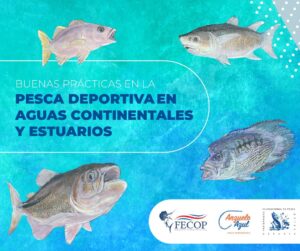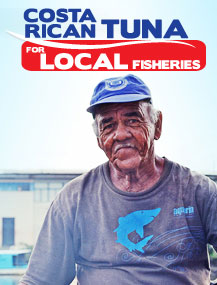From Coastal Angler Magazine
September 24, 2014
By Todd Staley
 When anglers think of the Pacific Coast of Costa Rica they usually think about billfish. Costa Rica continues to be one of the top destinations in the world to chase these pointy-nose acrobats. The Los Suenos Billfish Tournament Series, the Marina Pez Vela/IGFA World Tournament and the Redbone/Boomer Esiason tournament at Crocodile Bay all broke records for the number of fish caught in the 2014 season.
When anglers think of the Pacific Coast of Costa Rica they usually think about billfish. Costa Rica continues to be one of the top destinations in the world to chase these pointy-nose acrobats. The Los Suenos Billfish Tournament Series, the Marina Pez Vela/IGFA World Tournament and the Redbone/Boomer Esiason tournament at Crocodile Bay all broke records for the number of fish caught in the 2014 season.
Many folks travel to Costa Rica with billfish fever and are not even aware of the great inshore fishery available here. A fish many anglers have never even heard about before their arrival in Costa Rica is the roosterfish. This unique-looking fish with seven combs as a dorsal fin is only found in the Eastern Tropical Pacific between southern Mexico and Ecuador. In its most northern and southern ranges, the fish move as the seasonal drop in water temperature arrives. Costa Rica, being in the smack-dab middle of Roosterfish’s range, enjoys a fairly constant water temperature and a year-round fishery.
In many places, roosterfish are only available by fishing the surf break. Not in Costa Rica. Of course they cruise the beaches looking for an easy meal, but they also roam the many volcanic reefs. One area that is extremely productive is the Golfo Dulce on the Osa Peninsula in southern Costa Rica, a 32-mile-long tropical fjord. Here you find roosters almost everywhere, along the beaches and even over reefs in 200 feet of water. This allows anglers to target them using several different fishing styles. The locals also catch them with dead bait using handlines off the beach.

Roosterfish in the Golfo Dulce average 15 pounds, and fish over 50 pounds are taken weekly. The resort record at Crocodile Bay is 106 pounds. Live bait is most always a sure bet. Blue runners, goggle-eyes, sardines and lookdowns are the favorite choices and are readily available. If you are looking for a monster and have the patience to wait it out, bridle up a 3- to 5-pound live bonito and hang on. The best method to fish live bait is to either slow troll behind the surf line or drift fish over volcanic structure. In the deeper areas, a 2- to 6-ounce weight is added to send the bait closer to the top of the reef. In Costa Rica, circle hooks are required by law when using bait, so it is best to have the “crank don’t yank,” mentality firmly planted in one’s brain.

Popper fishing is also popular. Fish will often rise to a lure that is really ripped through the water. This is not a walk-the-dog fishing. The faster you work the popper, with lots of splash, the more hits you will get. At times, you will be surprised by a big orange flash as a hefty cubera snapper comes up from 80 feet to smash a popper. If a fish misses its target, don’t stop. They will often come back and strike again. A long stiff rod and six weeks of dumbbell curls are required to cast poppers any length of time.

Jigging will also get you your first rooster, but they are a little shyer to a jig than live bait or poppers. White or chartreuse bucktails produce in the shallow water and mental jigs work in the deep areas. Just about any brand of jig will work as long as it is worked fast.
No one I know has found the “Holy Grail” for taking roosterfish on a fly. If you are looking for a real challenge, it’s game on. If you are looking for big numbers on a fly, roosterfish is probably not a good choice of adversary. There has been some success by teasing up roosters, much like you would a sailfish. They can be teased with a lure or live bait or by casting a popper with the hooks removed. To get a fly in front of charged-up rooster though, you have to have the speed of a Western gunslinger and the accuracy of William Tell. If you happen to be lucky enough to be on top of a school of bait and a herd of roosterfish charge in on them, you can get your fly in the middle of that action and have a good chance of hooking up. Some have had success trolling the fly, but that is taboo in many a fly guys’ book. To sum it up, if someone tells me they regularly catch roosterfish on a fly, I certainly wouldn’t leave my wife alone with them. Surely they can’t be trusted.
Anyone thinking about a Costa Rica billfish vacation should really book at least one day inshore. Roosterfish are a strong and beautiful fish with an iridescent hue. Their unique dorsal cuts the surface as it hones in on its target. When hooked, they make powerful runs and sometimes clear the water in an aerial display. They make for an exciting sporting challenge and a replica makes for a great conversation piece on the wall. They really are a fish to crow about.
Todd Staley is the fishing director at Crocodile Bay Resort on the Osa Peninsula. He can be reached at todd@crocodilebay.com. More information can be found at www.crocodilebay.com or by calling (800) 733 1115.






















